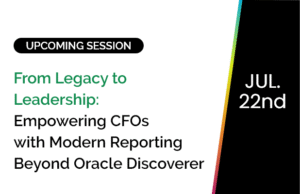Predictive People Analytics
Predictive people analytics is the technology that learns from past data. It uses existing data to determine individual behavior, which means that predictions are precise. It segments the workforce based on individual needs, and transform the model into an employee-centric one. This model allows HR to focus on areas that matter to the employee, understanding and engaging with them on a more profound level.
The Challenge
HR teams are now expected to contribute to strategic business goals, such as increasing revenue and market share. HR is adept at reporting on operations and compliance, but strategic goals seem elusive. How can HR improve something like gross revenue?
The answer to business outcomes is in the basic mission of all HR teams:
Attract, Develop and Retain Top Talent
Easy? No, but we have new technologies that can help. By analyzing HCM data in new ways, we can answer a host of new HR questions.
Hiring
- Which candidate sources produce the highest quality-of-hire?
- Which candidates are most likely to succeed?
- How can we reduce time-to-hire?
Development
- How does training spend affect performance and tenure?
- Who has promotion potential?
- How can we increase employee performance?
Retention
- Which top performers are likely to exit and why?
- What should we do to prevent exits?
- What are the best retention options?
By observing traits and behaviors from the past, we can suggest what people are likely to do in the future. Let’s start with a question that’s frequently answered using predictive analytics:
How likely are employees to quit in the next 6 months?
This is a big question. By answering it, we can learn where people are likely to quit, which critical skills will be affected and how much it will cost to replace the employees. We can then forecast alternate outcomes and build effective retention and hiring plans.
To calculate exit risk, we need historical information about applicants (previous employer, education, tenure in industry) and employees (dates of hire/exit, performance, training spend, compensation). There can be hundreds of factors that drive tenure and they’re all in our HR systems. We have this data.
*Deep dive into statistics*
Armed with this data, the predictive model follows these steps:
1. Train the model using 80% of historical employee data
- For each former employee, pick a random 6-month period of their time with the organization.
- Assemble each person’s traits at the beginning of the 6-month period.
- Examine changes in traits over the 6-month period.
- Run a regression analysis to determine which traits correlate with exits…and stays. This correlation information represents the training.
2. Verify the training by predicting the past. Forecast the exits of the remaining 20% of former employees.
3. Apply the learning to current employees.
*End deep dive*
This analysis will tell us how likely every employee is to exit and what factors drive the exits. From here, we have all we need to create targeted retention plans and forecast their efficacy.
Let’s tackle another common HR question:
How can we increase employee performance?
We answer this question by using the predictive model to identify traits of top performers and compare them against traits of other employees. This identifies gaps in development that are limiting performance potential.
How do we hire better…which candidates are most likely to succeed in each role?
This is answered in a similar way to predicting employee performance. We use the predictive people analytics model to identify traits in candidates that have resulted in high performance of actual employees. This intelligence helps us hire longer lasting, higher performing employees.
There are many more HR questions we can answer using predictive analytics. Our data is more useful than most of us realize.









